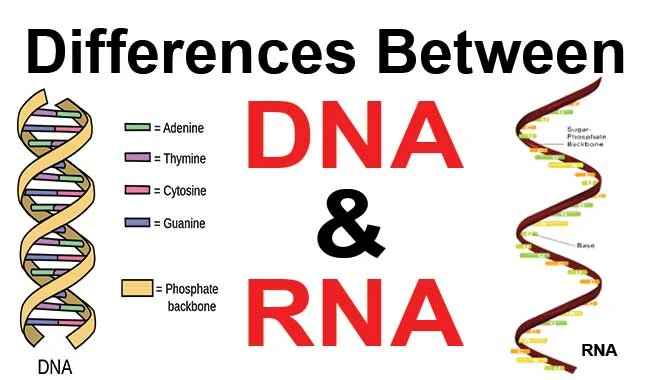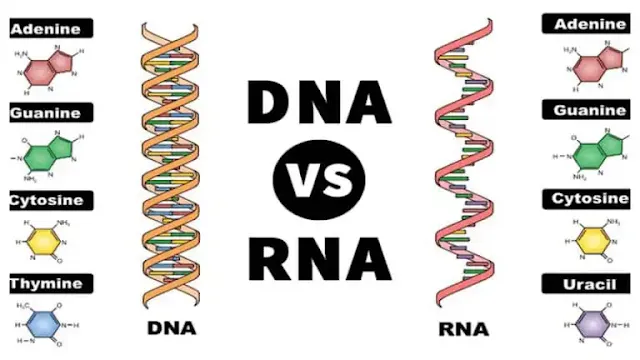
DNA Full Form: Today in this post I will tell you about "DNA Full Form". As soon as the word DNA comes in the mind of many people, the question arises that what is the full form of DNA? And they ask other people or search DNA Full Form on Google.
This question is also asked a lot in many competitive exams because it is a biological word. So the students get upset on seeing this question.
So do not worry, in this post I will give you information about DNA Full Form. Not only this, in this post you will also know what is DNA and who discovered it? I will tell in detail about what is DNA test etc.
What is the Full Form of DNA ?
The full form of DNA is Deoxyribonucleic Acid. It occurs in every human cell. This genetic material is bundled within the cell (in a muscle, heart or brain cell) into chromosomes. Each person normally has 46 such chromosomes (23 pairs chromosome). The pair of chromosomes that determines our sex consists of two XX chromosomes in females and one X and one Y chromosome in males. There is DNA inside the thread-like chromosomes.
| DNA Full Form | Deoxyribonucleic Acid |
| Discovery of DNA | Friedrich Mischer (In 1869 AD) |
The 23 pairs of chromosomes from the mother and father enable the genetic material to mix continuously. So the chromosomes are shuffled anew in each child.
Who discovered DNA ? (History of DNA)
The basic principle of genetics i.e. inheritance, was first discovered in 1866 by Gregor Mendel, who was later dubbed the father of genetics.
Three years later, in 1869, the Swiss physical chemist, Friedrich Mischer, discovered the first DNA. At that time DNA was the first to be discovered which was a completely new substance and it was not yet known how important it is to life.
Reporting from Live Science, it was not until 1953 that Francis Crick, James Watson, Maurice Wilkins and Rosalind Franklin discovered the structure of DNA, we know today as a double helical polymer.
The discovery is a very important advance for physiology and medical science, as it has been able to explain how information is passed from a tiny matter to a living being.
Francis Crick, James Watson and Maurice Wilkins were awarded the Nobel Prize in 1962 for their discoveries.
Wha is the structure of DNA ?
Each chromosome contains DNA . It consists of a sugar residue, deoxyribose, and four bases, called adenine, thymine, guanine, and cytosine. The entire genetic code – that is, each human gene – is made up of an infinite number of different combinations of these four bases.
According to Watson, Crick, Wilken and Franklin, DNA consists of two chains made up of bonds between nucleotides or phosphates, sugars and nitrogenous bases.
Nucleotide molecules in the form of sugars and phosphates bind to each other and form two long spiral strands known as the double helix in DNA. The nitrogenous base sugars are attached to the phosphate molecule as a backbone by covalent bonds.
DNA consists of nucleotide molecules that contain a phosphate group and a nitrogenous base, namely adenine, thymine, guanine and cytosine. The nitrogenous base adenine will bind only to the nitrogenous base thymine, while cytosine will only bind to guanine.
Reporting from Live Science, the DNA chain is so long that it must be coiled to form chromosomes to enter the cell. The nucleus of a human cell contains 23 pairs of chromosomes that determine the inheritance of traits.
Why DNA is necessary ?
DNA contains genetic information in an encrypted (coded) form and is passed on to subsequent generations. It is a central feature of living beings, because without DNA there is no living being. This genetic information is stored in a sequence of individual bases that determine gender, hair or eye color. You can roughly compare it to the letters that make up a person's name.
During reproduction or cell growth, this information is transmitted by making identical copies of DNA.
What is RNA ?
RNA stands for ribonucleic acid which is one of the genetic material consisting of nucleotides. In the human body, RNA serves as a carrier of genetic information and is involved in the synthesis of various proteins.
In all living things, DNA serves as the carrier of genetic information. It stores information that includes a blueprint of each living being, such as gender, hair or eye color. In some viruses, RNA performs this function.
In addition to transmitting genetic information, RNA has many other functions. For example, it serves as a transmitter of information for protein production or as a activator (ribozyme), similar to an enzyme.
What are the difference between DNA and RNA ?
Ribonucleic acid or RNA is a polynucleotide consisting of only one chain. Instead of DNA, RNA is the carrier of the genetic code in the virus. Let us know the difference between DNA and RNA.

1. Location (DNA Vs RNA)
DNA is also found in the nucleus or nucleus of the cell or in the fluid of the nucleoid, whereas RNA is found in the cytoplasm of the cell, nucleus and ribosomes. DNA cannot leave the nucleus, whereas RNA can leave the nucleus.
2. Chain Size (DNA Vs RNA)
DNA has a double helix shape consisting of two interlocking chains, whereas RNA has only one chain or helix. RNA has very few nucleotide chains as compared to DNA chain.
3. Sugar Component (DNA Vs RNA)
The sugar-phosphate backbone in DNA is made up of 2-deoxyribose, whereas in RNA it is made of ribose. RNA is unstable in bases because ribose is more reactive than deoxyribose because it contains a OH group. This means that RNA is unstable against enzyme attack and cannot be protected for long periods of time like DNA.
4. Methodology (DNA Vs RNA)
DNA serves to store and transmit genetic information over a long period of time. RNA serves as the carrier and translator of the genetic code for the manufacture of proteins. RNA functions to inhibit gene expression to suppress tumor or cancer growth.
5. Ultraviolet Damage (DNA Vs RNA)
DNA is more susceptible to damage by ultraviolet light than RNA which is more resistant.
6. Construction (DNA Vs RNA)
DNA can make itself through replication assisted by the enzyme DNA polymerase, whereas RNA cannot make itself. RNA is synthesized by DNA with the help of the RNA polymerase enzyme, when it is needed, used, and recycled.
Frequently Asked Questions (FAQs)
Q1. What is the Full Form of DNA ?
The full form of DNA is Deoxyribonucleic Acid. It occurs in every human cell. DNA contains genetic information in an encrypted (coded) form and is passed on to subsequent generations.
Q2. What is the Full Form of RNA ?
The full form of RNA is Ribonucleic Acid. In the human body, RNA serves as a carrier of genetic information and is involved in the synthesis of various proteins.
Q3. Which protein is in DNA ?
Nucleotides are the four different components that make up a DNA molecule. Each nucleotide is made up of nitrogenous molecules. Adenine, Guanine, Thymine and Cytosine are the four nucleotides. These nucleotides can also be found in circrnas called deoxyribose.
Q4. Which sugar is found in DNA ?
Pentose sugar is found in DNA which is called deoxyribose. Nucleotide molecules in the form of sugars and phosphates bind to each other and form two long spiral strands known as the double helix in DNA.
Q5. How protein is made in DNA ?
Genes are found in the nucleus and are responsible for protein synthesis. Through RNA, specific proteins are transmitted from DNA.
Conclusion:
Today in this post, I told what is DNA Full Form? Apart from this, you learned about DNA and RNA. Here you also know who discovered DNA? If you found this information helpful, then do share it with other people as well. If you still have any question related to DNA or RNA, then definitely ask me by commenting.
